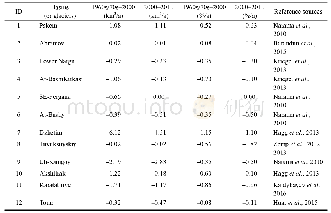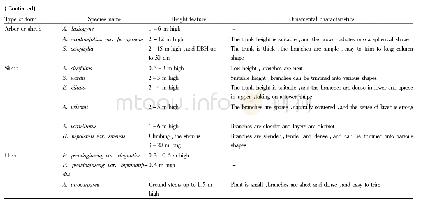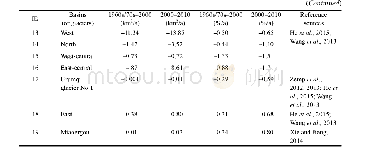《Table 6 Variations inδ34 SV-CDT compositions of sulfides formed during the two mineralization perio
 提示:宽带有限、当前游客访问压缩模式
提示:宽带有限、当前游客访问压缩模式
本系列图表出处文件名:随高清版一同展现
《"The Zhaxikang Vein-type Pb-Zn-Ag-Sb Deposit in Himalayan Orogen, Tibet: Product by Overprinting and Remobilization Processes during Post-collisional Period"》
The S isotope compositions of sulfide minerals from periods A and B that were determined during this study and those previously reported by Yang et al.(2009)are given in Table 6.These samples haveδ34SV-CDT values of4.5‰–13.2‰,consisting of 11.2‰–13.2‰of sphalerite,11.2‰–12.7‰of pyrite,9.9‰of galena.Period A galena,sphalerite,and pyrite yielded a narrow range of positiveδ34SV-CDT values(9.9‰–13.2‰)that are little higher than the range of the period B samples(7.2‰–12.1‰;Fig.16b).In period B,sphalerite from the deposit yields the highestδ34S V-CDT values of 9.1‰–12.1‰,followed by galena and sulfosalt minerals(boulangerite)with 9.4‰and8.7‰–11.2‰in pyrite,while stibnite yielding the lowestδ34S values of 4.5‰–9.2%(Fig.16b).However,the Sisotope compositions of samples from the Zhaxikang deposit differ from those of other Sb-Au deposits in this area,which have values between~5‰and 0‰(Fig.16a).The S isotope composition of south Tibet sedimentary rocks is relatively higher than the period B that is around10‰(Fig.16a).
| 图表编号 | XD0017171900 严禁用于非法目的 |
|---|---|
| 绘制时间 | 2018.04.01 |
| 作者 | LIANG Wei、HOU Zengqian、ZHENG Yuanchuan、YANG Zhusen、LI Zhenqing |
| 绘制单位 | Chengdu Center,China Geological Survey、Institute of Geology, Chinese Academy of Geological Sciences、China university of geosciences、Institute of Mineral Resources, Chinese Academy of Geological Sciences、Institute of Mineral Resources, Chinese Academy of G |
| 更多格式 | 高清、无水印(增值服务) |
查看“Table 6 Variations inδ34 SV-CDT compositions of sulfides formed during the two mineralization periods”的人还看了
-

- Table 4 Variations in the photosynthetic characteristics of pepper seedlings before and after storage
-

- Table 1 Variations in glacier area in the typical river basins (or glaciers) of the Tianshan Mountains during the1960s/7





